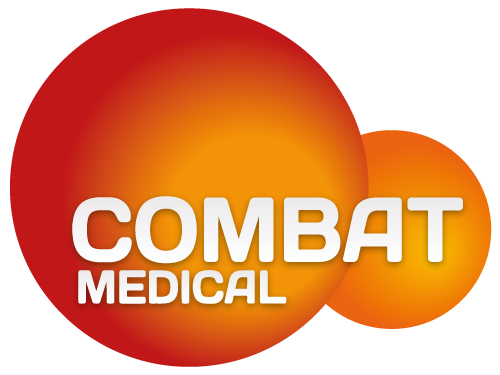When you’re developing new medical devices, it’s not good enough simply to have a great product. The challenges for small companies and start-ups in this highly competitive environment are many.
By Edward Bruce-White
Combat Medical’s patented technology is helping to combat three of the ten most common cancers. Our devices safely heat, recirculate and deliver the chemotherapy agent directly to the body cavity to target the cancer cells for maximum effect. The CE-marked devices have the potential to save, extend or improve millions of lives.
We’re confident that we’re going to succeed, but as in any process of medical innovation, there are many hurdles left to surmount, as funding trials and new country registrations are both costly and complex.
Our devices are available in over 40 countries and routinely used in 200+ hospitals worldwide, including 30 NHS hospitals. Over 1,000 patients have been recruited onto clinical trials and efficacy data have been presented on more than 1,500 patients for our devices. We’ve funded trials and expanded our R&D through a collaboration between the Combat team, medical professionals and specialist investors.
Despite medical advances, bladder and peritoneal cancers (including ovarian cancer) are among the most difficult cancers to treat and, in the case of bladder cancer, receive only 0.6% of National Cancer Research Institute funding. Among those affected with such diseases, recurrence rates are still high, and the side effects of existing treatments continue to present significant problems.
At Combat Medical, we’ve been working hard to optimise current drug delivery. Our aim is to save and improve patient lives by enhancing treatment efficacy without causing additional side effects.
To be recommended in guidelines and adopted, products need to be clinically effective, affordable and easy to integrate into current practice. We are working hard to make robust, safe, clinically effective and usable products. Competing in this market requires a vast range of resources, time and investment, which is challenging for smaller companies, no matter how effective the treatments and products.
Innovation that saves lives
Our solution for combating these cancers is a patented medical device that delivers drugs directly to the cavity via a closed recirculation method at a precise temperature and pressure. The optimum therapeutic temperature for hyperthermia is 43°C. Targeting cancer cells in this way is effective because cancer cells can’t manage the heat as well as healthy cells. The cancer cells are actively destroyed, while, at the same time, the heat stimulates the body’s own immune response to attack these cells, recognise them and stop them from recurring.
Some drugs have also been shown to be more active at 43°C. Exciting experimental studies have been performed with hyperthermia, increasing response rates of PD-L1 checkpoint inhibitor drugs (a type of immunotherapy). The Combat BRS device has been shown to activate thermally sensitive drugs, enabling the delivery of 17 times more chemotherapy to the bladder while limiting toxicity to other organs.
We’ve met stringent approval requirements in the UK, Europe and Australia and have recently treated our first US patients. We’ve also been granted humanitarian use approval for Duke University in the USA, allowing us to treat US patients.
The devices have been in clinical use since 2011. We have invested in several ongoing trials, with data being steadily released and continuing to be released over the next three years. Judging by our existing results, collected in smaller trials and audited and presented by hospitals, there is good reason to be optimistic. Increases in disease-free survival vary dramatically depending on the type of cancer, but results are already showing significant improvements in patient outcomes.
Ensuring our presence is recognised
It’s not enough to have a good product. It must fulfil a specific need, and customers must be able to access it via a strong sales and marketing plan and effective distribution channels. We have established a global sales network, with 29 distributors covering 40 countries. We work in partnership with over 300 leading hospitals globally and over 30 NHS hospitals, including UK university hospitals such as University Hospitals of Leicester and University College London Hospitals, as well as organisations further afield, including the Netherlands Cancer Institute and Duke University in the US.
We work with cancer charities globally and have also been selected as one of 30 UK companies to be awarded and benefit from an Innovate UK scale-up programme, which also led to the award of a £2 million Innovate UK grant to use the patented technology to develop a new post-operative, active NIPEC – normothermic (room temperature) intraperitoneal chemotherapy – treatment for late-stage ovarian cancer, which we believe will improve patient outcomes – as does HIPEC inventor Dr Paul Sugarbaker.
To compete in this market, you must fundamentally prove your clinical results, which is why we have engaged in such a comprehensive clinical trial programme.
Navigating difficult terrain
Although our achievements so far have been significant, there are huge challenges for a start-up like Combat. Acquiring the necessary investment to innovate, grow, ensure compliance in a highly regulated industry and engage in clinical trials and new R&D is expensive and, with a small team, requires dedication and enthusiasm.
Remembering why we do this and the difference our systems and treatments can make to patients keeps everyone in the company motivated to succeed and to ensure as many patients as possible can benefit from our treatments. We continue to focus on our mission of saving and improving patient lives. As CEO, I feel incredibly proud of the dedicated efforts made by the whole team in pursuit of this end goal.
This article originally appeared in The Parliamentary Review

